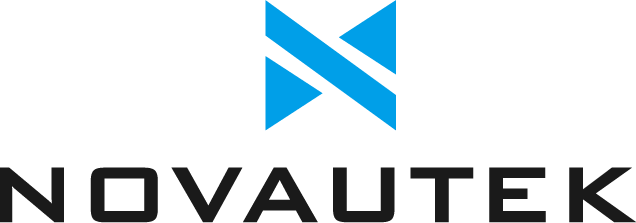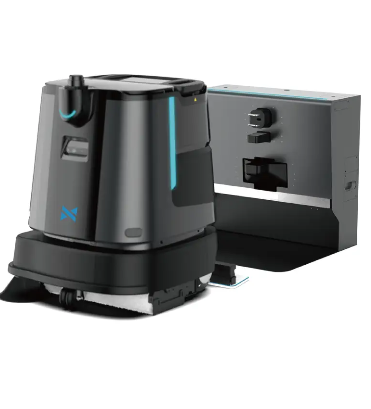Key Features to Look for in a Smart Mapping Sweeping Robot
Laser Navigation vs. Camera-Based Systems
Picking out a smart mapping robot vacuum means getting familiar with how it actually navigates around. Laser navigation works through something called LIDAR tech which creates pretty accurate maps of whatever space it's in. These robots know exactly where they are even when moving through big houses with lots of different rooms. The real advantage comes from being able to find its way back to specific spots again and again, especially helpful in homes where furniture gets rearranged frequently. Camera based systems work differently though. They basically take pictures as they move around to figure out what's going on. Sure, they get good visuals but tend to struggle when there isn't enough light because they need some kind of visual reference points. That's why many people still prefer laser navigation if they want reliable cleaning results no matter what time of day it happens to be.
Real-Time Room Recognition Technology
The ability to recognize different rooms in real time has become one of those game changing features for modern vacuuming robots. These machines can now tell apart living rooms from kitchens or bedrooms just by sensing their surroundings. What makes this so helpful? Well, when a robot knows where it is, it adjusts how it cleans based on what that particular space needs. Floors vary across most houses anyway some have carpets, others hardwood or tile, not to mention varying amounts of stuff lying around. Take a look at popular models from companies such as Roomba and Roborock they've built this room awareness into their designs. The result? Cleaner floors all over the house because these bots create custom paths for each area instead of following some generic route regardless of what kind of mess awaits them.
Multi-Level Home Mapping Capabilities
Households with multiple floors really need good multi level mapping if they want their robot vacuum to work properly. When a robot has advanced mapping tech, it can figure out where each floor starts and stops, so it doesn't just wander around aimlessly. These smart cleaners change everything for people who live in bigger homes, something older models simply couldn't handle. We're seeing more and more people looking for robots that can navigate complicated house layouts, according to industry reports showing rising sales in this segment. What makes these devices stand out is how they move from one floor to another without getting confused, making sure even those hard to reach spots get cleaned regularly.
How AI Enhances Modern Sweeping Robots
Obstacle Avoidance Algorithms
The obstacle avoidance systems powered by AI really boost how well robots navigate through spaces filled with furniture and other stuff lying around. With these smart systems, the machines can spot things blocking their way and find alternate routes so they keep moving along their cleaning path. Research shows that this tech makes the cleaning route better and the whole process more efficient, covering floors thoroughly without going over the same spots again and again. For people living in homes that never seem to settle down, especially those with kids running around or furry friends causing chaos, this kind of smart navigation makes life easier. The robot dodges toys scattered across the floor and stays clear of pet food dishes, protecting household items while still keeping everything clean and organized.
Self-Learning Cleaning Patterns
Modern vacuum robots now come packed with artificial intelligence that lets them learn from how people live and what their homes look like. These smart machines actually get better at cleaning over time because they adapt to individual needs and spaces. When a robot spends enough time navigating around furniture and understanding where dust tends to collect, it starts mapping out smarter routes for maximum effectiveness. Take companies such as iRobot and Shark for example both have rolled out these learning capabilities in recent models. Many users report spending less time on housework since getting one of these devices. People love coming home to cleaner floors without having to manually direct the machine everywhere. Some even mention noticing dirt spots that never got cleaned before now showing up spotless after several weeks of operation. This kind of adaptive learning represents a real game changer for anyone tired of fighting with traditional robot vacuums.
Voice Control Integration
Voice control is becoming increasingly popular among sweeping robot manufacturers looking to make life easier for their customers. When these machines come equipped with smart assistants such as Alexa or Google Assistant, people find it much simpler to begin, pause, or set up cleaning times just by speaking aloud. The ability to operate without touching anything really resonates with folks living in modern smart homes, where everything from lights to thermostats responds to spoken words. Market research shows that more households are adopting smart tech every year, and voice commands remain one of the most desired features. Beyond making things convenient, this development gives homeowners more options when it comes to keeping their floors clean without lifting a finger.
Top Performance Considerations for AI-Powered Cleaning
Battery Life and Recharge Efficiency
Battery life matters a lot when looking at sweeping robots, especially if someone lives in a bigger house. A good battery means the robot can tackle large spaces without stopping for frequent charges. Robots that handle their charging schedule well save people time and keep things running smoothly around the home. Some newer models come with what's called "recharge and resume" technology. These machines will go back to their dock when low on power, then pick up right where they left off once charged again. This makes them really useful for folks with sprawling floor plans who don't want to constantly reset their cleaner. Looking at customer feedback across various platforms, the Roborock S8 Pro Ultra stands out for how long it lasts between charges. Many users report getting through entire houses on a single charge, making it one of the better options currently available for those prioritizing runtime.
Suction Power Adjustments by Surface Type
Smart tech makes vacuum robots better at their job because they can automatically adjust suction power depending on what kind of floor they're cleaning. When moving from carpet to tile or wood, these robots know exactly how much suction force works best without any help from people. Take the Roborock Qrevo for instance. This model does pretty well at switching between different surfaces, giving carpets enough power while not damaging delicate hardwoods. People who own one often mention that their homes stay cleaner longer since the robot handles all those setting changes itself. No more running around to tweak buttons every time there's a different room to clean.
Automatic Dirt Disposal Systems
Automatic dirt disposal has become a game changer for sweeping robots, cutting down on how much humans need to get involved with cleaning tasks. Modern tech lets these robot vacuums dump their collected dirt all by themselves without any manual intervention required. Take the Shark IQ Robot XL for instance it actually has a built-in system that transfers debris into a larger base station when it returns home. This kind of setup saves owners from having to empty tiny dust bins every few days, which is especially nice for folks who want their cleaning done while they're busy with other things. Looking at what's happening in the market right now, sales figures show that these self-cleaning features are becoming increasingly popular. More households are gravitating toward solutions that make their weekly chores simpler rather than just another chore list item.
Maintenance Tips for Advanced Sweeping Robots
Software Update Best Practices
Making sure the software on your sweeping robot stays current really matters if you want it to work at its best and get all those cool new features manufacturers keep adding. When companies release updates, they often bring better navigation systems and cleaner smarter ways of doing their job around the house. Most people find checking for updates through either the companion app or directly within the robot's settings menu works pretty well. Some folks report seeing noticeable improvements after installing these updates too – one survey found around 60% saw their robots perform better once updated, though results might vary depending on brand and model. Setting up push notifications for when new software comes out helps prevent missing important upgrades, so the machine keeps running smoothly without any unexpected hiccups down the road.
Sensor Cleaning and Care
The sensors on sweeping robots play a crucial role in how they move around and spot obstacles during cleaning sessions. When dust builds up or hair gets stuck on them though, the robot just doesn't work right anymore. Most owners find themselves needing to clean those little eyes regularly. A simple wipe down with a microfiber cloth usually does the trick, but sometimes stubborn stuff needs a blast of compressed air to clear out completely. Keeping those sensors clean really makes a difference in day-to-day performance. Without proper care, robots tend to bump into things more often, miss spots while cleaning, or get confused about where they're supposed to go. Some folks have actually had their robot stop working altogether after months of neglecting basic sensor maintenance. So it's worth making time for this small task as part of weekly robot care routines.
Troubleshooting Common Mapping Errors
Sweeping robots sometimes get confused about where they are because their sensors might be off track or there could be problems with the software. When we notice things going wrong early on, like when our robot keeps missing entire rooms or crashes into furniture multiple times, it makes sense to address those issues before they become bigger headaches. To fix things up, most people find that adjusting the sensors helps a lot. We should also check that nothing is blocking the robot's path around the house. If all else fails, doing a factory reset usually brings everything back to normal. Looking at what other users have shared online gives us some good ideas too. Many suggest wiping out the robot's memory completely and then creating a fresh map of the home through the companion app. This approach tends to work better than trying random fixes. Taking these steps ahead of time keeps our robot running smoothly instead of dealing with the same frustrating problems over and over again.
FAQ
What is the difference between LIDAR and camera-based navigation systems in sweeping robots?
LIDAR-based systems use laser technology for precise mapping and navigation, even in low-light conditions, while camera-based systems rely on visual data, which may be hindered in darker environments.
How does AI enhance sweeping robot performance?
AI enhances performance through obstacle avoidance algorithms, self-learning cleaning patterns, and automatic adjustments, leading to more efficient and thorough cleaning sessions.
Why is voice control integration important in smart mapping sweeping robots?
Voice control allows users to manage cleaning sessions hands-free with smart assistants, offering convenience and ease in connecting with smart home devices.
What maintenance is required for optimal performance of sweeping robots?
Regular software updates, sensor cleaning, and troubleshooting mapping errors are essential for ensuring optimal robot performance and longevity.

